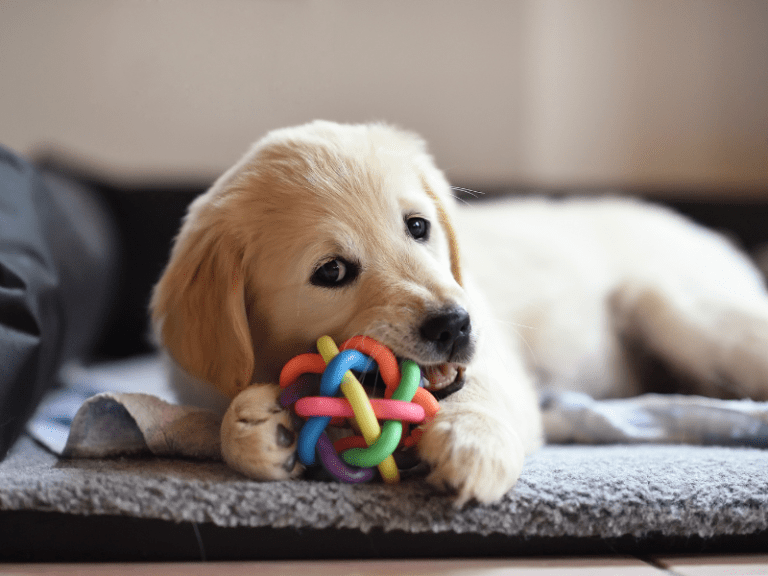Taming Dog Aggression: 5 Strategies For Success
FULL DISCLOSURE: The links I share in this course ARE my affiliate links. This means I earn a commission, at no extra cost to you. In fact, sometimes you’ll get a discount or free credits just FOR using my link. 🙂
Dogs are known for being friendly and sociable animals. Still, even the most well-trained and well-behaved dog can sometimes exhibit signs of aggression.
If your dog becomes aggressive, it can be a cause for concern. Not only is it confusing and difficult to understand, but it can also be dangerous for your dog and other dogs around them. But don't worry; there are ways to manage and prevent aggressive behavior in your dog.
In this blog post, we'll explore the causes of aggressive behavior in dogs and give you a step-by-step guide on how to handle it, including how to remove your dog from the situation, identify the trigger, seek professional help, keep your dog on a leash, use positive reinforcement and train your dog for socialization.
What To Do When Your Dog Becomes Aggressive

If your dog becomes aggressive, it's important to take immediate action to address the behavior. Here are a few steps you can take to help prevent and manage aggressive behavior in your dog:
1. Remove Your Dog From the Situation
If your dog is showing aggressive behavior, remove them from the situation as quickly and safely as possible. This will prevent the behavior from escalating and protect other dogs and people from getting hurt.
When your dog becomes aggressive, you should remove them from the situation as quickly and safely as possible. This will prevent the behavior from escalating and protect other dogs and people from getting hurt.
What Should You Do When Your Dog Is Aggressive at Home?
You should immediately leave the area if you are in a public place or at a friend or family member's home. If you are at your home, you should confine your dog to a separate room or crate.
How Should You Act With an Aggressive Dog?
When removing your dog from the situation, it's important to remain calm and not show any signs of anger or aggression. Speak to your dog in a low, soothing tone and use a leash or lead to guide them away from the situation.
Remember, aggressive behavior is often a sign of an underlying issue, so removing your dog from the situation is a short-term solution, and you will still have to address the cause of the problem.
How Should I Assess the Situation?
Once your dog is safely away from the situation, it's important to take a step back and try to understand what might have caused the aggressive behavior. It could be that your dog was feeling frightened or threatened or simply reacting to something they perceived as threatening. Understanding the cause of the behavior can help you better address it in the future.
2. Identify the Trigger
Try to determine what triggered your dog's aggressive behavior. Did the other dog do something to provoke your dog, or was it a fear or territorial response?
The AKC has come out with new research about why dogs become aggressive. However, all research agrees that understanding the trigger can help you prevent similar situations in the future.
What Triggers Dogs To Be Aggressive?
Some common triggers of aggressive behavior include fear, territoriality, possessiveness, and resource guarding.
Fear-Based Aggression
Fear-based aggression can be seen when your dog perceives something as a threat, such as a loud noise or an unfamiliar person.
Territorial Aggression
Territorial aggression can occur when your dog feels like their territory is being invaded by another dog or person.
Possessiveness
Possessiveness can arise when your dog becomes protective over a specific object or food.
Resource Guarding
Resource guarding is when your dog is aggressive when someone tries to take or approach them when they have something they value.
How Do I Help My Dog With Dog Aggression?
To identify the trigger, you should observe your dog's body language and behavior and listen to any sounds they make before and during the aggressive display. Pay attention to the context of the situation, and try to remember if there were any specific events or stimuli that occurred immediately prior to the aggressive behavior.
Once you have identified the trigger, you can work on a training plan to help your dog react differently to that trigger through positive reinforcement and desensitization.
Understanding the cause of aggressive behavior is the key step to addressing it and preventing it from happening in the future.
3. Seek Professional Help

If your dog's aggressive behavior is severe or ongoing, it's important to consult with a professional trainer or behaviorist who can help you address the underlying causes of the behavior and develop a management plan. They will be able to provide you with a more detailed assessment of your dog's behavior and a customized plan that addresses their specific needs.
How Do Trainers Train Aggressive Dogs?
A professional trainer or behaviorist will have the knowledge and experience to help you identify and address the underlying issues contributing to your dog's aggressive behavior.
They may suggest behavior modification techniques, such as desensitization and counter-conditioning, which can help your dog learn to react differently to the triggers of their aggressive behavior.
They will also be able to provide you with guidance on how to effectively manage your dog's behavior and prevent aggressive incidents in the future.
Can A Trainer Fix Dog Aggression?
It is important to note that addressing aggressive behavior in dogs is a process that may require multiple sessions with a professional and consistent practice at home; therefore, it is crucial to be patient and to stay committed to the plan.
What Are Other Causes of Dog Aggression?
Keep in mind that in some cases, aggression can be caused by a medical condition, like pain or an underlying disease. Therefore, it is also a good idea to visit the vet to rule out any medical conditions before consulting with a trainer or behaviorist.
4. Keeping Your Dog On A Leash
One of the most important steps you can take when your dog becomes aggressive is to keep them on a leash at all times when you're in public or around unfamiliar people and animals. This will prevent your dog from making contact with others and give you better control over their behavior.
How Can A Leash Help An Aggressive Dog?
Keeping your dog on a leash is also a great way to prevent your dog from running off and getting lost. Not only that, but it also ensures the safety of people and other animals around you.
Having your dog on a leash sends a clear message to others that you are aware of and in control of your dog's behavior.
Remember that training and proper socialization are essential to help prevent aggressive behavior from occurring. A professional dog trainer or behaviorist can help you understand the underlying causes of your dog's aggression and develop a plan to address it.
5. Train Your Dog For Socialization

Proper socialization is also important to help prevent aggressive behavior in your dog.
Does Socializing and Training Dogs Make Them Less Aggressive?
Socializing your dog means exposing them to a variety of people, animals, and environments in a controlled and positive way. This can help your dog learn how to behave appropriately around others and become comfortable in various situations.
Socialization should begin at a young age and should continue throughout your dog's life.
Training Your Dog
Training your dog is also an important aspect of addressing aggressive behavior. It can help teach your dog basic obedience commands such as “sit,” “stay,” and “come,” which can give you more control over their behavior.
Additionally, training can teach your dog how to respond to different stimuli and distracts in a way that is not aggressive.
Positive Reinforcement Training
Positive reinforcement training methods are the most effective and humane way to train your dog. A professional dog trainer or behaviorist can help you develop a training plan that is tailored to your dog's individual needs and can help you address specific issues related to aggressive behavior.
Redirecting Your Dog's Energy in a Positive Way
When dealing with an aggressive dog, it is important to take immediate action to ensure the safety of yourself, your family, and others. Keeping your dog on a leash and consulting with a professional dog trainer or behaviorist are both crucial steps in addressing aggressive behavior.
Training and socialization are also key to preventing and addressing aggressive behavior in dogs. Remember that aggressive behavior is often a sign that something is not right with your dog, whether it be an underlying health issue or a lack of proper training or socialization.
You can help your dog overcome aggressive behavior and live a happy and safe life with the right approach. It's important to remember that dog aggression can be dangerous, so it is recommended to reach out to professionals and seek help to improve your pet's well-being and the safety of everyone around.






